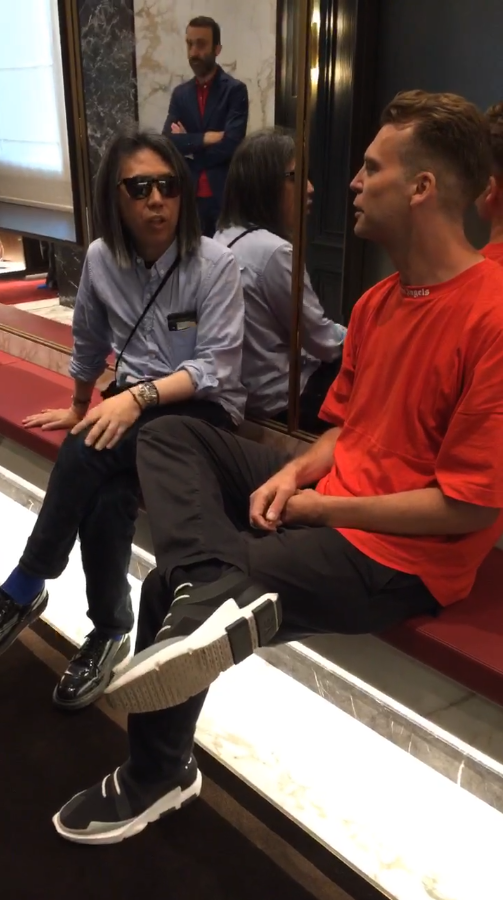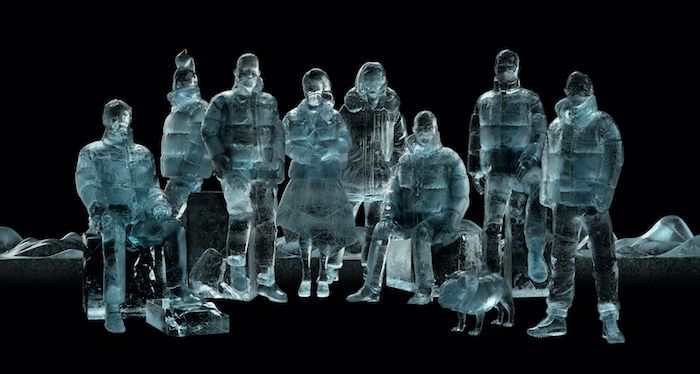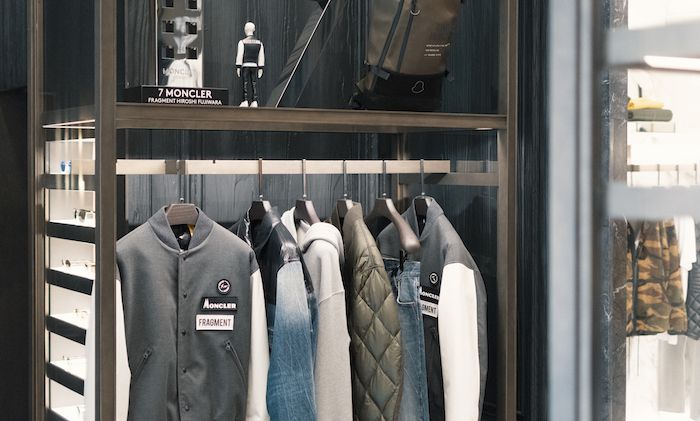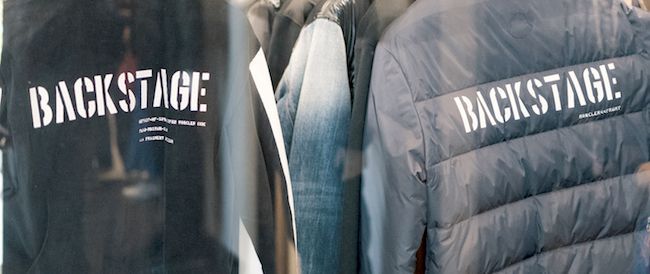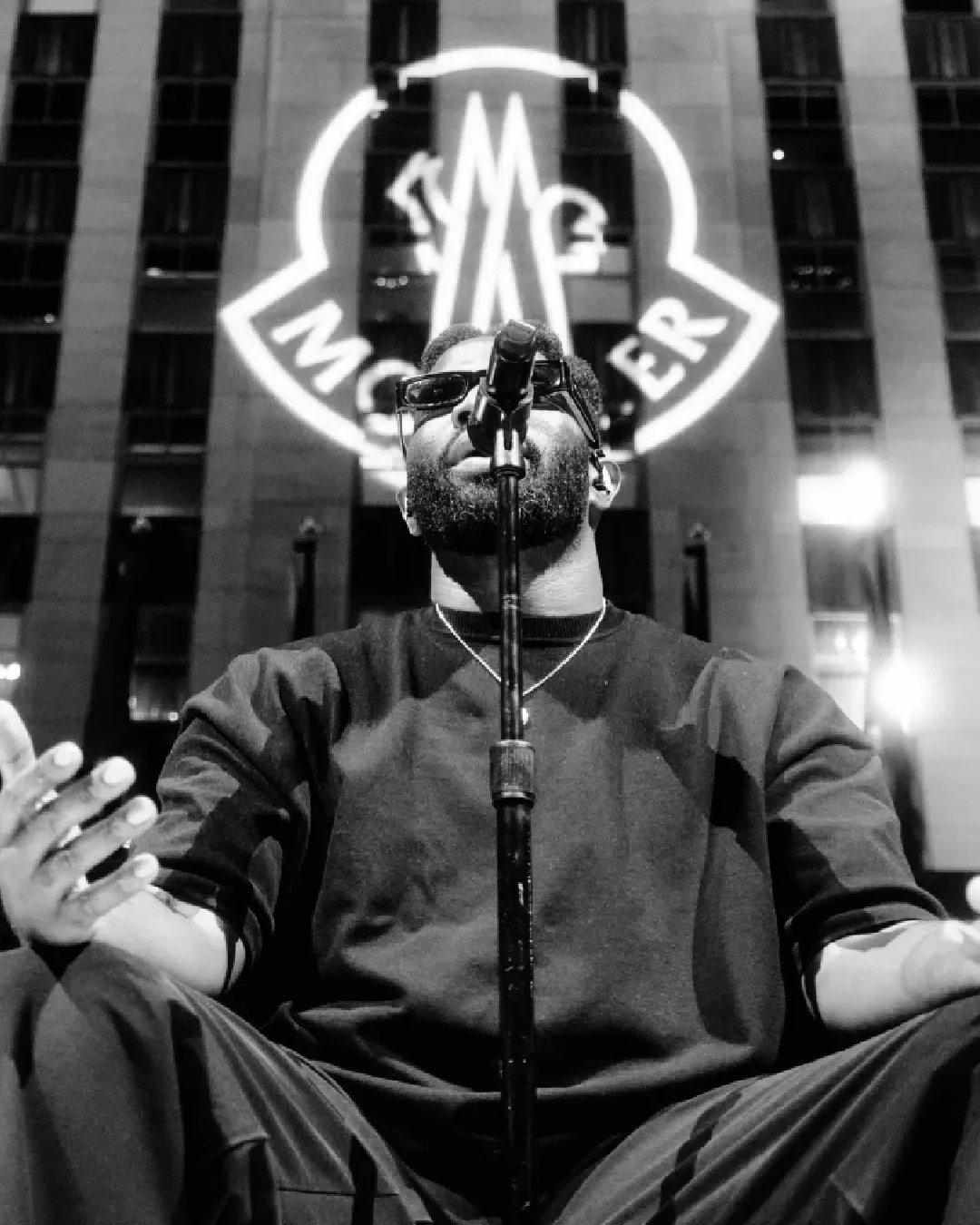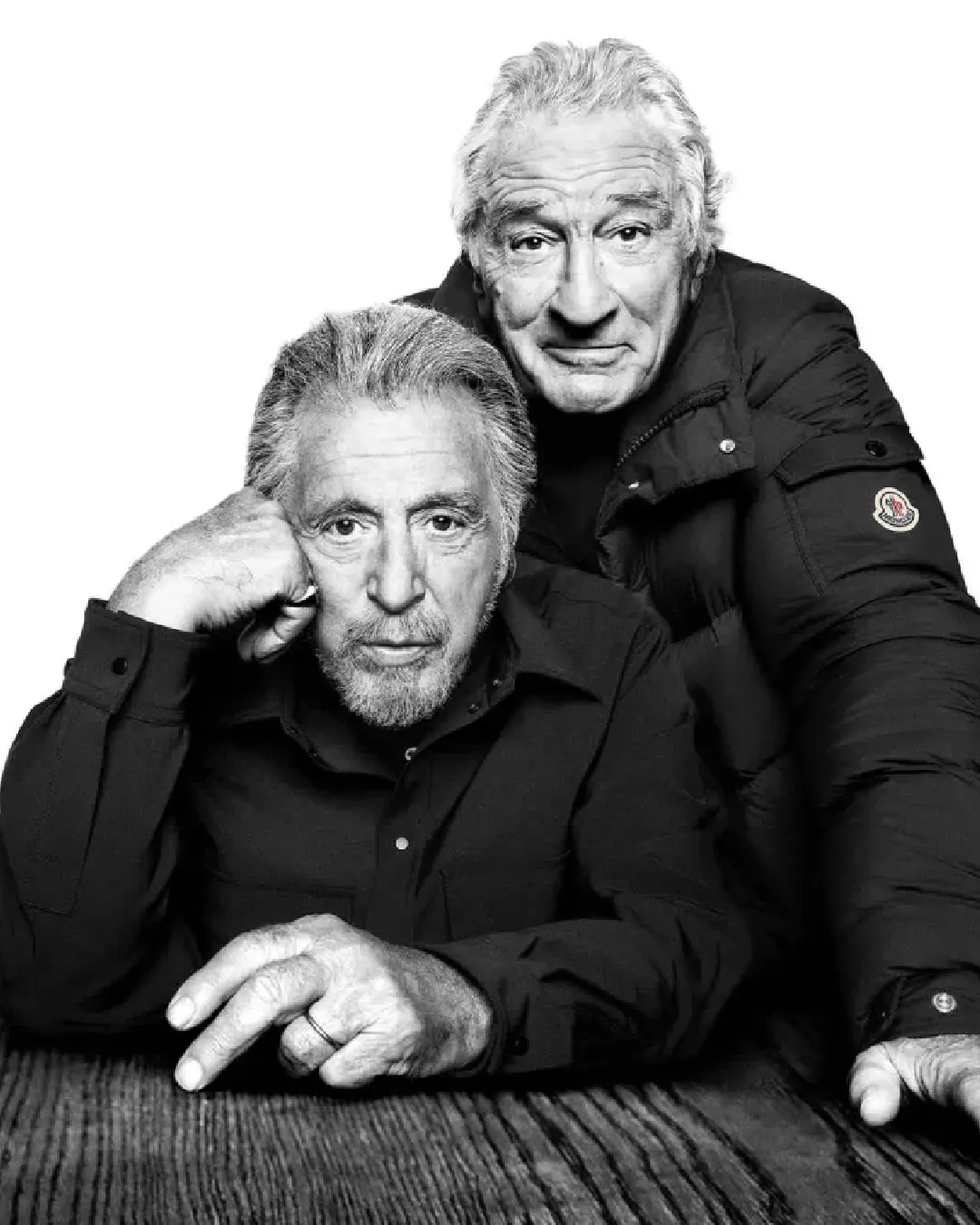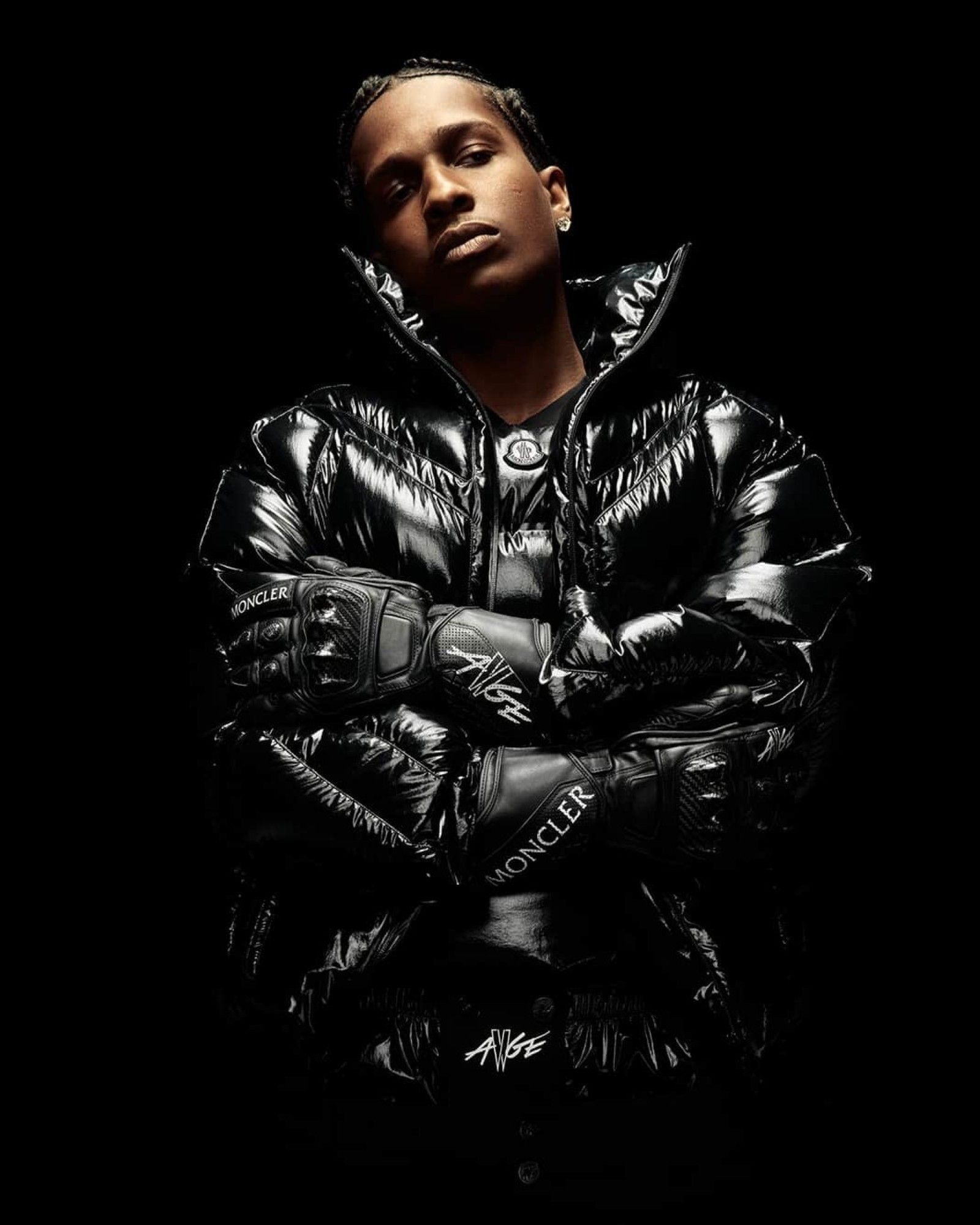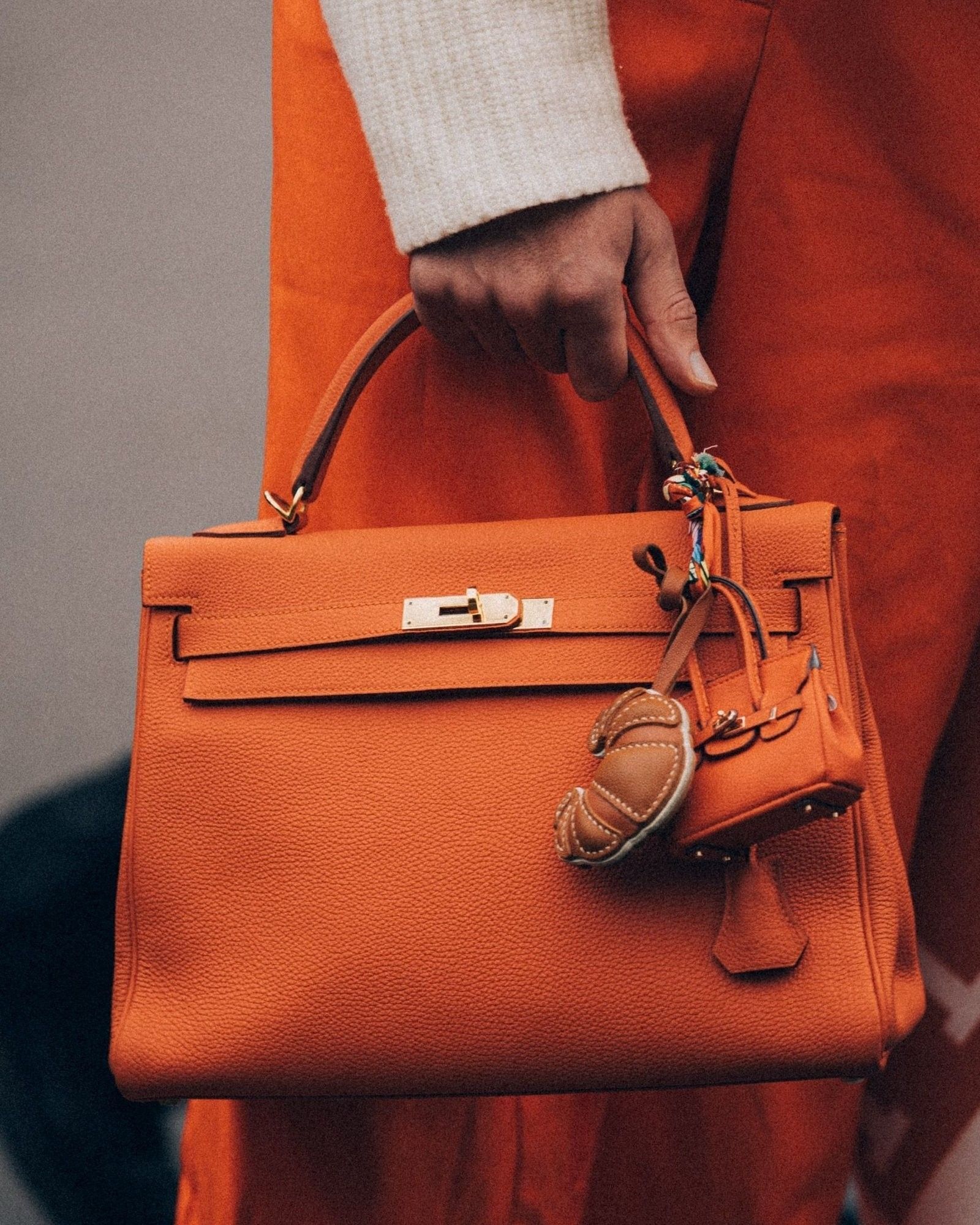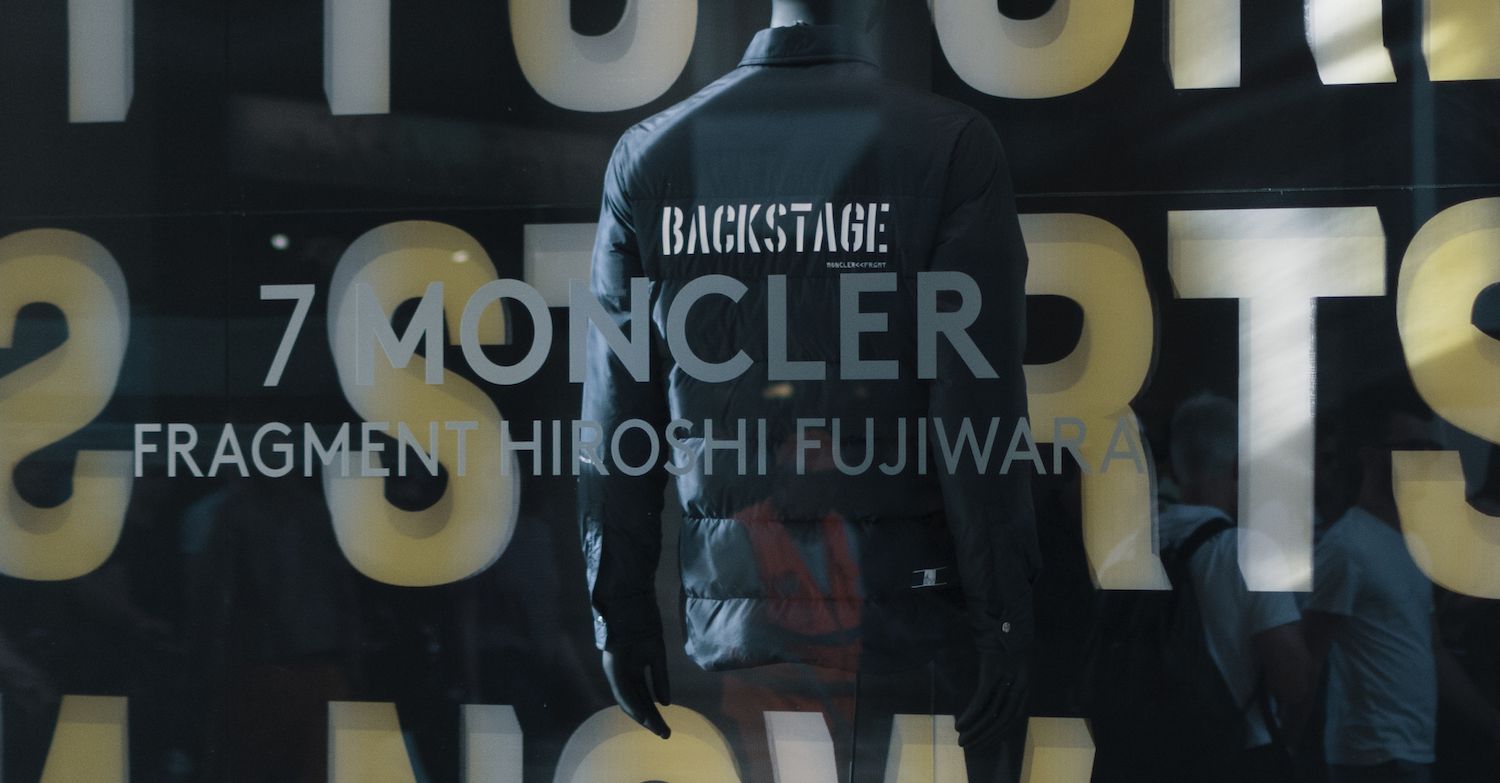
Interview with Hiroshi Fujiwara At the Moncler Genius Fragment release event in Florence
On the occasion of Moncler kicking of its Moncler Genius project in Florence on Wednesday during Pitti Uomo, nss sat down with the designer of the first collection, Fragment's, Hiroshi Fujiwara, to get an insight into the collection and his creative process.
What follows is a transcript of the talk he had with Peter Dahlgren.
Hiroshi Fujiwara in conversation with Peter Dahlgren for nss
PD: How did the Moncler collaboration come about and what intrigued you about doing it?
HF: Moncler contacted me and what I knew was that they did like luxury winter clothes with a strong heritage.
PD: So you maybe knew them more from their ski stuff?
HF: Yes and he (Remo Ruffini) told me, cause he's like a real genuine mountaineer person, all about it, after which I felt a really good connection with him, and I wanted to do it.
PD: When asked to design a collection for Moncler, what elements of its rich heritage did you want to incorporate and what elements did you want to evolve?
HF: I really liked the vintage vibe that Moncler had, and their technique of using two buttons, I liked it, so I was looking at all the archives and was trying to put the fragment influence into it
PD: Ok so that's how you worked, you looked back at their catalog, and then you tried to add your influence?
HF: Yes
PD: So the finished pieces, do you feel its a bit of Fragment and a bit of Moncler, or more a third unknown element?
HF: For this first collection, I think its a mix of both Fragment and Moncler classics re-interpreted.
PD: Ok, cause I was also wondering how that works, does Moncler sort of let you do what you want, or do you get lots of input from them?
HF: they actually let me basically do what I want
PD: Is this a way that you like to work? Is that what you prefer?
HF: A-ha yeah, it's really easy to work with the Moncler team
HF: everyone actually works really hard at Moncler
PD: So there's a theme of music and an exploration of ‘backstage’ as a concept please tell us a bit about that, and why you choose it?
HF: I actually didn’t have the word ‘backstage’ or anything like that, then when Moncler came over to Japan, to show us textile samples. I was going to perform live (music) which they came to see me play, I kind of come up with, why don't we do this backstage print on the back, you know like every venue has a backstage, and Moncler liked that idea also.
PD: So do you take a lot of inspiration from your music when you design clothes?
HF: Yes, I think so. The other collection coming in December, has a 'to the east, to the south, and to the west' theme, which is derived from a hip-hop influence.
PD: Everyone always brings up this hip-hop backstory with you, and I'm just curious, do you know anything about Italian hip-hop, rap, trap?
HF: No, not at all
PD: Ok, are you into and listen to any contemporary and modern day hip-hop?
HF: Not so much, do you?
PD: Sure I do, and moving to Italy was interesting because Italians always do things in their own style, and Italian rap and trap is definitely something quite special.
HF: I think it is similar in like how Japan does things in its own way.
PD: Yes definitely, and yeah some of the young Italian rap acts now, it's like pretty crazy. But what is also very interesting is that they have a very keen, like quite high fashion aesthetic somehow. Where hip-hop used to be way more about the sort of street and ghetto influence of it, and in the same way like in the US now, where rappers are very fashion aware, you’ll see Italian hip-hop acts wear a lot of high-end brands, while still have this very Italian street attitude.
HF: Ah ok, cool!
PD: Do you know the rest of the Moncler Genius range, and its designers, have you checked them out, have a favorite or anything you particularly like?
HF: I saw some things when they did that show in Milan (February) that one time.
PD: So you don't know the other designers really?
HF: No, not so much.
PD: So was there anything that you saw, where you thought, oh that's interesting?
HF: I saw the Japanese guy, Kei, which was really interesting
PD: Did you know him before or?
HF: No, I still have never met him, but the work he does is really interesting.
PD: Ok so Craig Green you don't know either?
HF: No, but he was really interesting too.
PD: Yes he’s great!
PD: I'm curious if there's a trend in contemporary fashion now, that you really like, and perhaps something you really don't like?
HF: Wow hmm, I don't know... sometimes people say like, 90’s revival or 80’s whatever. But I don't really see the revival, cause it's always there.
PD: Yeah I think it's a little like if you actually lived and saw the 80’s and 90’s, you’ll always be able to see its influence, but to a new generation that didn't, it feels like this new thing and to them becomes a trend.
PD: There’s this continuous talk in fashion now, and in the Genius collection as well about these lines of luxury and street, and how they're becoming ever more blurred. I'm wondering where you feel you lie in all that?
HF: Yeah I like the way it works, but still luxury always picks up from street things, but street kids can't really pick up Louis Vuitton or anything, so luxury or the bigger companies always have the power, which I feel could be more even I think.
PD: But don't you think that that's changing a little bit, because nowadays much younger people are getting into, and becoming aware and influenced by more high-end fashion brands.
HF: I think it still needs more work
PD: Well I guess you need more money too..
*laughs*
PD: But where do you feel your collection is situated?
HF: I really don't know how much, cause I never really looked at the price.
PD: Yes but I mean more in the sense that luxury isn’t always just about a price, and I guess that you still feel quite connected to street culture right?
HF: Yeah
PD: So where do you feel aesthetically the collection is placed?
HF: So I think this Moncler collection is more like easy to wear.
PD: When you make a collection like this, what is your initial approach? Do you design through intuition or more think things through, and have a clear design in your mind from the start, that you then try to bring into reality? In a similar way to making music, do you compose before or more jam it out?
HF: I don't really have a clear idea, maybe a little idea, or have a discussion on how to start anyways, but then it comes up sort of slowly but surely.
PD: So the pieces you finally make, are they always a little bit of a surprise to you?
HF: Yeah I think so
PD: I think that's what art is right?
HF: Yes, I never have something like, it's here, you know, we kind of start here, and then some other stuff rises and comes up.
PD: I suppose the day when that doesn’t happen, it's no fun anymore, so you always need to keep developing
HF: Yes, I think its really important and why I enjoying working so much with the Moncler team actually. If I have one idea, and they have a few ideas, it builds up.
PD: Yes, and that's the true nature of collaboration right?
HF: Yes mhm.
PD: Alright, I think that's a cool way to end it no?
HF: Yes ok alright
PD: Domo Arigatou Gozaimashita! (polite thanks in Japanese)
HF: Laughs, Thank you so much!
The Moncler Fragment collection is available now!










































